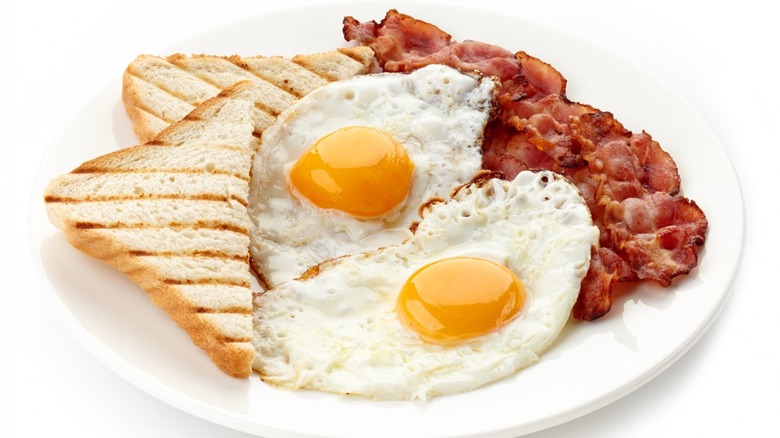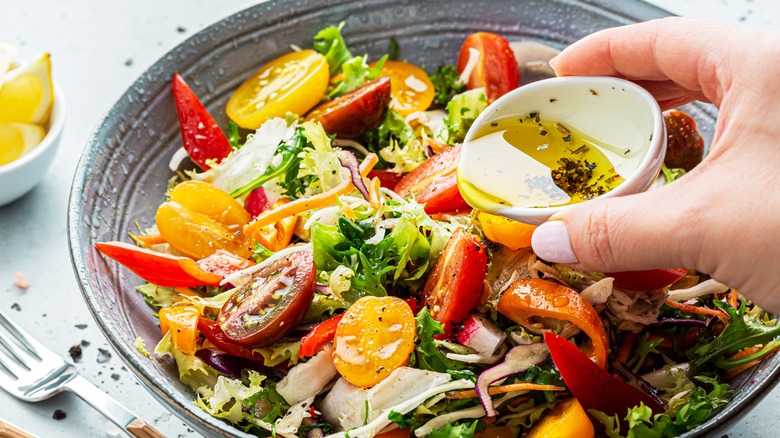Add Vinegar To Your Fried (And Scrambled) Eggs And Thank Us Later
Many aspiring chefs discover the magic of cooking through breakfast — specifically, through the attainable act of making scrambled eggs. While the most basic recipe involves little more than eggs and low heat, this breakfast staple can be tweaked in a number of ways to become your signature dish.
One strategy to give your eggs a unique appeal, whether they're fried or scrambled, is to add a little acid. We're not talking about dousing them with lemon juice. Just sprinkle on a few drops of vinegar, from balsamic to apple cider, once they're finished cooking. This easy step helps the flavor of your eggs come alive without being overpowering — especially if you cook them in butter, which has a richness that can be deliciously balanced with a touch of acid. If you have extra time, you could try chef Roger Vergé's fried egg technique, which involves a rich yet tangy pan sauce made by reducing wine vinegar with the leftover cooking butter.
Besides adding a flavorful zing to your breakfast or brunch, vinegar can also make preparing eggs more efficient. For example, if you add a touch of acid when whipping egg whites, the chemical reaction can decrease the beating time and enhance the fluff factor. Eggs boiled in vinegar-spiked water are known to be easier to peel, while those poached with a little vinegar better maintain their shape.
What other foods can benefit from vinegar?
Vinegar has a distinctive flavor. When added to a recipe, it makes its presence known. While salad dressing is an obvious place to use it, there are many other uses for vinegar you may not have considered — such as adding it to desserts. Your mind might think, "That can't be palatable," but your tongue will say, "Yum!"
This is because conflict creates interest, which is why two contrasting flavors clamoring for your attention can add a surprisingly enjoyable drama to the dining experience. It's also why mixing something sour or bitter with something sweet works so well. Try it out by spicing up your ice cream or fudge with a little balsamic vinegar. And if you want an easy way to add excitement to a cocktail, give it a drizzle of cider or sherry vinegar.
Sometimes vinegar is added to recipes for its chemical properties rather than its flavor. Pie dough is a great example of this. Though the science behind the addition of vinegar to pie dough may be debatable, proponents claim that it inhibits gluten. This ultimately improves the texture of the crust by reducing toughness. At the very least, this dynamic ingredient certainly does wonders for the taste.

